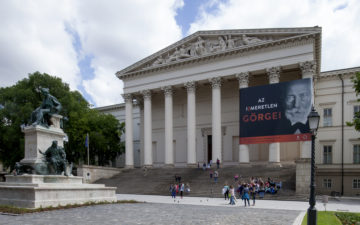About the Museum
Count Ferenc Széchényi, one of Hungary’s most eminent aristocrats offered his collection of books, maps and medals for the benefit of his beloved country in 1802. His example had been followed by many – the Palatine himself, aristocrats, citizens, fellow Hungarians and even some counties! What we call today the Hungarian National Museum had evolved from these donations. The construction of one of the most beautiful classicist palaces of Hungary began in 1837 based on the plans of Mihály Pollack. By 1846, exhibitions had been set up in the building. On 15th March 1848 the revolutionary youth of the era declared its ideas of freedom from the stairs of the museum. These ideas then formed the basis of societal reforms and modernisation taking place in Hungary. Today the museum helps preserving the national identity with its symbolic role it played in the Revolution and War of Independence in 1848 and its origins.
The task of the Hungarian National Museum is to collect, preserve and present the historical relics of the people living in the Carpathian Basin and Hungary using scientific methods. Its permanent collection contains several million pieces – among them world famous archaeological objects and priceless treasures of Hungarian history and culture.
The coronation mantle
One of the most valuable pieces of our museum is the ceremonial robe once worn by Hunraian kings at their coronations. According to the Latin inscription on the garment, it had been donated to the Basilica of Székesfehérvár by the first king Saint Stephan I and his wife Giselle in 1031. Originally a chasuble, the Byzantine silk cloth emboridered with golden thread only served as a mantle form the 13th century.







